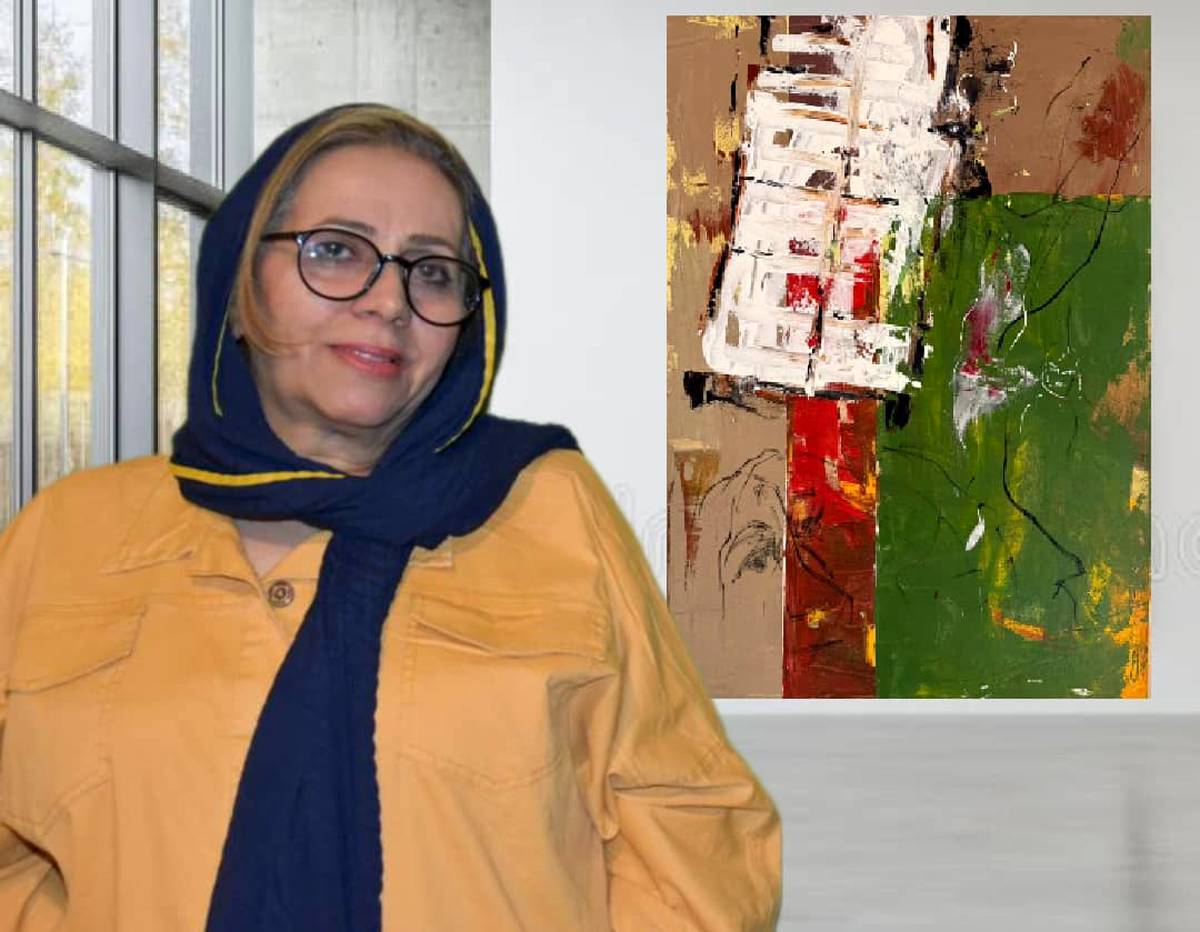
Salimeh Motamedi: A Window to Light
The aesthetic structure of this work rests upon contrast—a reflection of the dual nature of the feminine world: sensitive and vulnerable, yet resilient and full of energy.
ArtDayMe : Salimeh Motamedi (b. 1962, Isfahan) creates works that emerge at the crossroads of spirituality, mysticism, and contemporary social concerns. When presented by MartX and Bat Art Group at Art Fair Frankfurt 2024, Rachel Bianchi Archive / Galleria Bianchi Milan 2025, and ITHAQUE Gallery Paris 2025, her paintings received notable acclaim from critics, theorists, and art enthusiasts alike.
The present work—an expressive abstract painting from the Untitled series, executed in acrylic on canvas (50 × 70 cm)—embodies this aesthetic and conceptual depth.

The Untitled series stands among Motamedi’s most recent and socially engaged bodies of work—a collection in which the artist translates the silent cries and shared pain of women into a vivid and passionate language of color. As Motamedi herself notes:
“The blend of grays layered over red, white, and green mirrors the pain and social constraints we face. With these colors and gestures, I protest—and I long for change. The white window is my hope for tomorrow.”
The composition is vertically structured and divided into two halves: on the left, an earthy red-brown field holds a faintly visible face; on the right, a vibrant green space unfolds, marked by free black lines.
Between these two realms lies a prominent white form reminiscent of a window—a metaphor, as the artist suggests, for light and hope. Texturally thick and expressively rendered, this white axis functions as a threshold between two worlds: that of confinement and that of liberation.
Color carries both expressive and conceptual weight in this piece:
• Red stands for outcry, protest, and vitality.
• White symbolizes awareness and illumination.
• Green conveys life, hope, and endurance.
• Brown evokes the earthbound reality—the weight of society and the soil of existence.

The palette moves from the depths of the earth toward redness, and from redness toward light, unfolding a visual narrative of pain, persistence, and hope.
Technically, Motamedi remains faithful to her energetic painterly language—layered acrylics, rough textures, and assertive gestures. Swift brushstrokes, controlled splashes, and raw patches of pigment stand in tension with the delicate, trembling lines of the face, embodying the contrast between violence and tenderness—again, a reflection of womanhood’s dual essence: fragile yet powerful.
On the right, the free-flowing black lines resemble traces of movement or a dance in air—a feminine presence unbound by form, alive within space. Opposite it, the faint face on the left recalls women lost amid the noise of society, their gaze still enduring.
From a semiotic perspective, the painting continues the artist’s socially conscious approach. The white window at its center becomes the visual embodiment of hope—the entry of light into darkness. The flanking fields of red and green symbolize the struggle between pain and life, while the woman’s visage sustains the ongoing narrative of resistance.
The aesthetic foundation of the work lies in contrast: between chaos and order, matter and spirit, outcry and silence. Despite the turbulent energy of its colors, the viewer’s gaze ultimately finds repose in the white window—just as hope quietly blossoms within protest.
Motamedi’s painting, therefore, is not merely an image—it is a visual manifesto. Through color, she speaks the unspeakable; each brushstroke recalls a woman who, in silence, continues to cry out.

The Market Value of Salimeh Motamedi’s Works
Over the past decade, Motamedi’s artworks have seen significant growth in market value. Her pieces were presented at Art Fair Frankfurt 2024 at USD 4,000, and later priced at USD 4,000 in Milan and USD 5,000 in Paris.
This rise in market presence coincides with her increasing participation in international events—from China Expo (2006) and the World Peace Exhibition, Tehran (2007) to Farrel Gallery, Paris (2017), Artem Los Angeles (2024), and various renowned museums and galleries in Tehran.
Her first solo exhibition, “Faraway, a Voice Calls Me” (2005, Banafseh Gallery), followed by her 2007 show at Golestan Gallery, established her as a distinctive and enduring voice in contemporary Iranian art.

LEAVE A RELPY